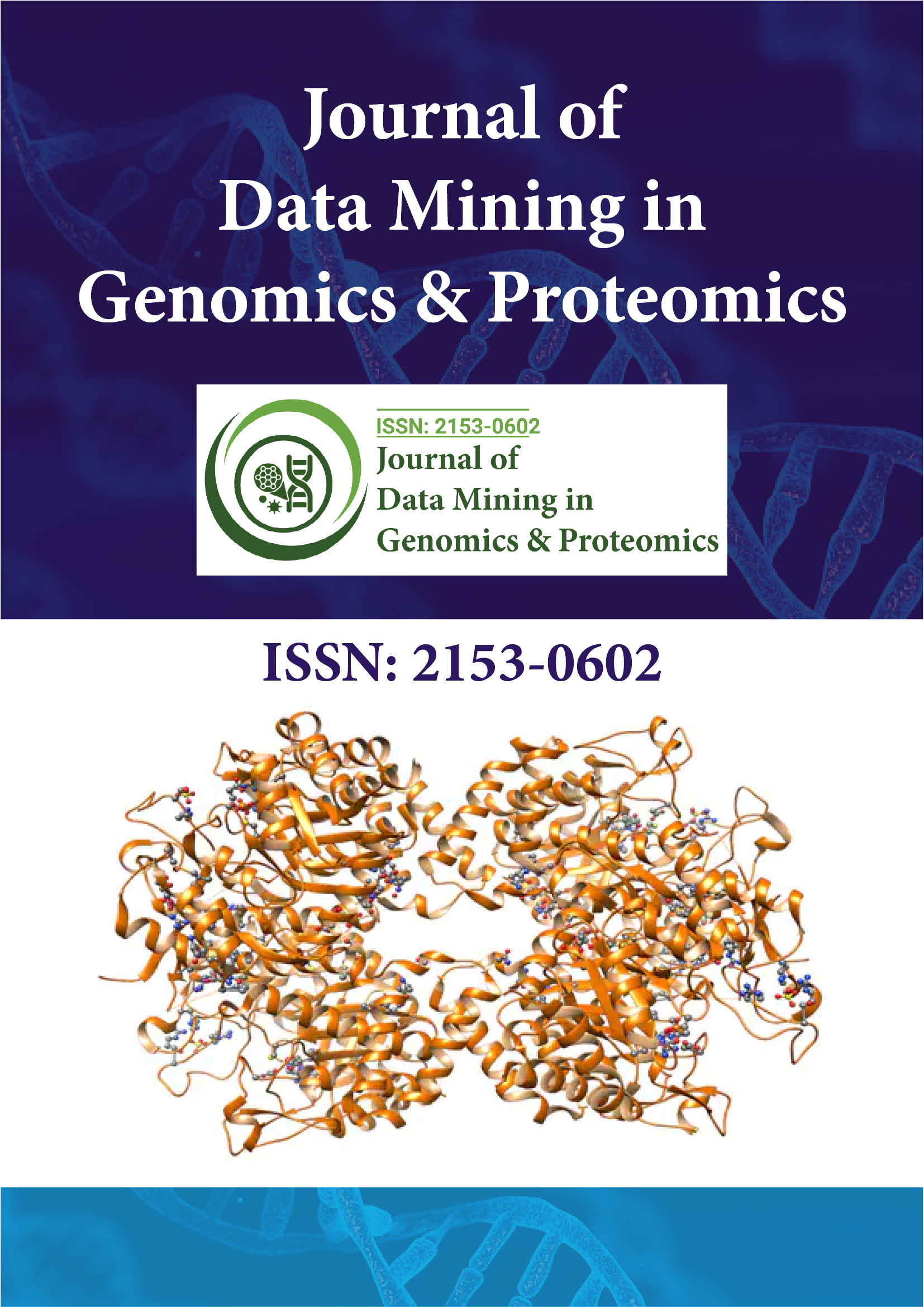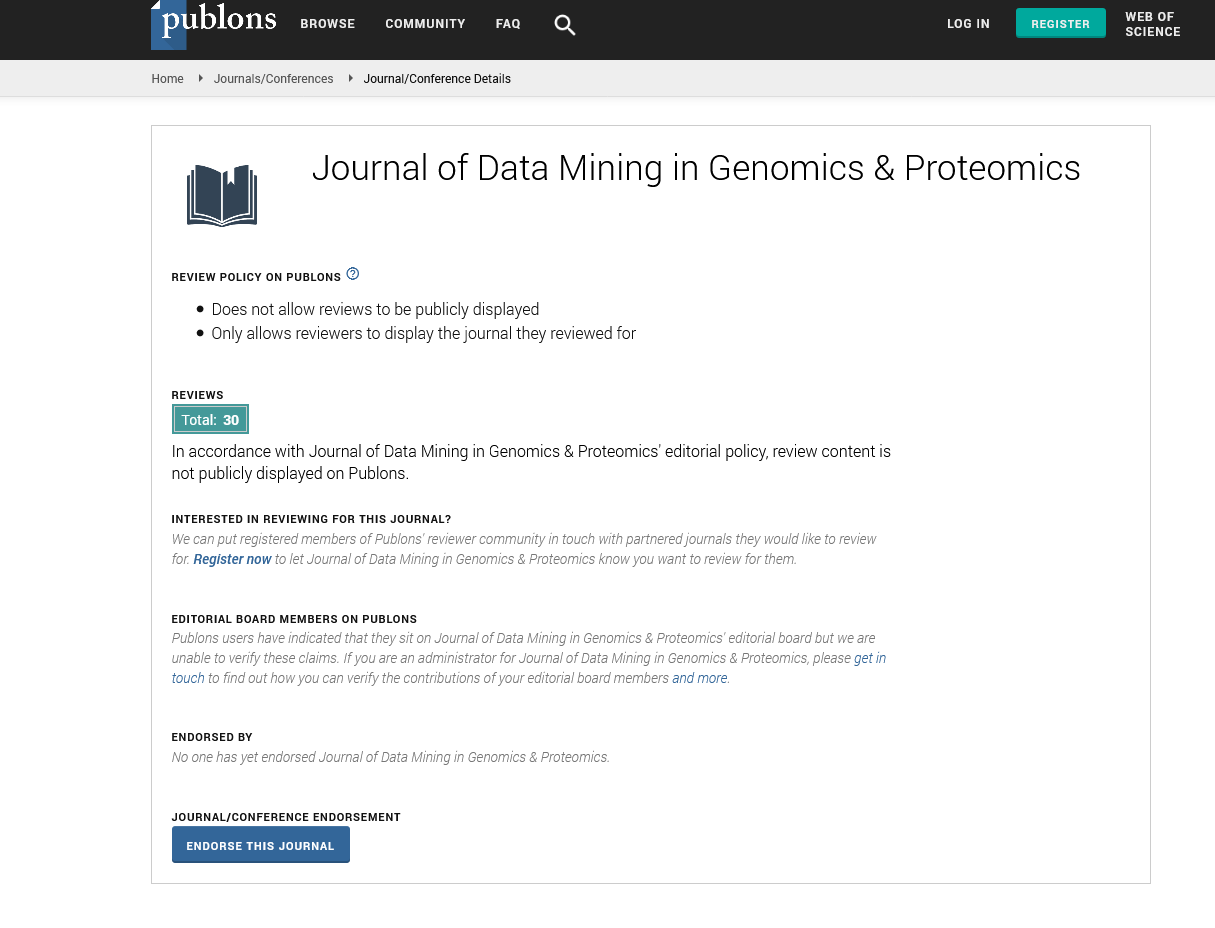Indexed In
- Academic Journals Database
- Open J Gate
- Genamics JournalSeek
- JournalTOCs
- ResearchBible
- Ulrich's Periodicals Directory
- Electronic Journals Library
- RefSeek
- Hamdard University
- EBSCO A-Z
- OCLC- WorldCat
- Scholarsteer
- SWB online catalog
- Virtual Library of Biology (vifabio)
- Publons
- MIAR
- Geneva Foundation for Medical Education and Research
- Euro Pub
- Google Scholar
Useful Links
Share This Page
Journal Flyer

Open Access Journals
- Agri and Aquaculture
- Biochemistry
- Bioinformatics & Systems Biology
- Business & Management
- Chemistry
- Clinical Sciences
- Engineering
- Food & Nutrition
- General Science
- Genetics & Molecular Biology
- Immunology & Microbiology
- Medical Sciences
- Neuroscience & Psychology
- Nursing & Health Care
- Pharmaceutical Sciences
Perspective - (2025) Volume 16, Issue 2
Role of Deep Learning in Protein Structure Prediction
David Thompson*Received: 29-May-2025, Manuscript No. JDMGP -25-29768; Editor assigned: 31-May-2025, Pre QC No. JDMGP -25-29768; Reviewed: 14-Jun-2025, QC No. JDMGP -25-29768; Revised: 20-Jun-2025, Manuscript No. JDMGP -25-29768; Published: 28-Jun-2025, DOI: 10.35248/2153-0602.25.16.387
Description
Understanding protein structure is fundamental to explaining biological function. The three-dimensional conformation of a protein largely determines its activity, stability and interactions within biological systems. For decades, experimental methods such as X-ray crystallography, Nuclear Magnetic Resonance (NMR) spectroscopy and cryo-Electron Microscopy (cryo-EM) have provided insights into protein architecture. However, these approaches are often costly, time-consuming and technically demanding, making it impossible to determine the structure of every protein in the human proteome. Advances in computational biology, particularly the application of deep learning, have transformed this landscape, offering new opportunities to predict protein structures with remarkable accuracy.
The success of deep learning in this field lies in its ability to learn patterns from vast databases of known protein sequences and structures. Unlike traditional rule-based methods, deep learning models automatically capture complex relationships between amino acid sequences and folding patterns. By leveraging large-scale datasets such as the Protein Data Bank (PDB) and multiple sequence alignments, these models learn evolutionary and structural constraints that guide protein folding. Importantly, they are able to capture long-range dependencies within sequences an essential factor in predicting the tertiary structure of proteins where distant residues may interact in three-dimensional space. Traditional computational methods, including homology modeling and molecular dynamics simulations, were pivotal in earlier attempts to model protein structures. Homology modeling relies on identifying similarity with known protein templates, but it is constrained by the availability of suitable templates. Molecular dynamics simulations, on the other hand, provide detailed insights into protein folding and conformational changes, but they demand immense computational resources and are often limited to small systems or short timescales. Deep learning approaches overcome many of these limitations by directly inferring structural features from sequence data and by generalizing beyond known templates.
One of the most transformative breakthroughs has been Alpha Fold, developed by DeepMind. In the 14th Critical Assessment of Structure Prediction (CASP14) competition, Alpha Fold demonstrated unprecedented accuracy, achieving near-experimental quality predictions for a wide variety of proteins. This achievement marked a turning point in structural biology. For the first time, researchers could access reliable predictions of protein structures at scale, accelerating progress in drug discovery, enzyme engineering and synthetic biology. Alpha Fold’s impact has been profound, as its open-access database now provides structural predictions for nearly every protein in the human genome, along with proteomes from numerous other species. The implications of accurate protein structure prediction extend well beyond individual molecules. High-quality models enable researchers to explore protein-protein interactions, protein-ligand binding and functional domains with much greater precision. This information is invaluable for rational drug design, where the shape and binding pockets of proteins determine how therapeutic compounds interact with their targets. In enzyme engineering, accurate models guide the modification of catalytic residues, stability enhancements and the development of novel enzymatic functions. Moreover, structural predictions support functional annotation of previously uncharacterized proteins, providing insights into pathways and mechanisms that were previously inaccessible.
Despite these advances, significant challenges remain. Intrinsically Disordered Proteins (IDPs) and regions, which lack stable conformations under physiological conditions, remain difficult to predict accurately. These flexible proteins play critical roles in signaling, regulation and disease and their structural variability complicates computational modeling. Furthermore, deep learning models typically predict static structures, whereas proteins often undergo dynamic conformational changes that are central to their function. Capturing these transitions requires integrating deep learning predictions with molecular dynamics and other simulation techniques, potentially leading to hybrid approaches that combine efficiency with physical accuracy. The increasing reliance on deep learning also highlights the importance of computational infrastructure. Training and deploying these models require substantial high-performance computing resources, including Graphics Processing Units (GPUs) and cloud-based platforms. As computational tools continue to evolve, more efficient architectures and transfer learning techniques are being developed, allowing models to be adapted to new protein families or specialized applications with reduced training costs.
Looking to the future, the synergy between deep learning and experimental biology promises to redefine structural biology. Predictions generated by computational models can now guide experiments, helping researchers prioritize targets for crystallization, Cryo-EM imaging, or functional assays. As datasets grow in diversity and quality and as models become increasingly sophisticated, it is likely that deep learning will achieve a level of reliability where computational predictions serve as the first point of reference for structural studies. This convergence of computation and experiment will not only accelerate biological discovery but also expand our capacity to design novel biomolecules for medicine, biotechnology and industrial applications. In conclusion, deep learning has revolutionized protein structure prediction, bridging a long-standing gap in biology. While challenges such as intrinsically disordered regions and dynamic conformational changes remain, the progress achieved so far is unprecedented. With continuous improvements in algorithms, data availability and computational resources, deep learning will continue to play a central role in structural biology, transforming both basic research and applied sciences.
Citation: Thompson D (2025). Role of Deep Learning in Protein Structure Prediction. Journal of Data Mining in Genomics & Proteomics. 16:387.
Copyright: © 2025 Thompson D. This is an open-access article distributed under the terms of the Creative Commons Attribution License, which permits unrestricted use, distribution and reproduction in any medium, provided the original author and source are credited.

